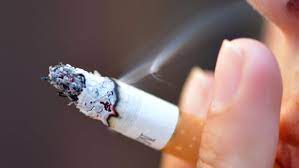Dr. Waseem Janjua & Sana Ahmad
Tobacco Harm Reduction (THR), a concept initially aimed at mitigating the health risks associated with tobacco use, has become a polarizing and contentious subject in recent years. While on the surface, THR appears to offer a compromise between public health and individual choice, there is a growing body of evidence suggesting that the tobacco industry has exploited and usurped this narrative to advance its own interests.
This write-up delves into the complex terrain of THR, examining its origins, the tactics employed by the tobacco industry, and the implications for public health. The roots of “Harm Reduction” can be traced back to medical practices whereby health-related harm can be prevented or reduced. For example, in the case of HIV/AIDS, one harm reduction measure would be to prevent the usage of infected syringes, etc.
However, THR can be traced back to the 1970s when health professionals and advocates began seeking alternatives to traditional tobacco products. The idea was to provide smokers with less harmful nicotine delivery mechanisms, such as nicotine replacement therapy (NRT, to reduce the health risks associated with smoking. The early intentions of THR were noble, aiming to offer a path for smokers to quit, and indirectly, to prevent the health of others due to secondhand smoke. Dr. Arnold Russell who proposed the idea of THR, generated considerable attention and debate.
While Dr. Russell’s research and advocacy have made significant contributions to the discussion surrounding THR, it is essential to critically examine whether his ideas have been misconstrued and twisted to meet the tobacco industry’s profit-centric agenda. THR is a concept that suggests smokers can reduce their health risks by transitioning to Nicotine Replacement Therapy and NOT to another nicotine-containing product. Instead of replacing nicotine, the industry continues to promote unregulated devices and other tobacco/nicotine products.
This practice makes the entire concept of harm reduction ethically questionable and very clearly profit-centric. As per the World Health Organization, the long-term health effects of electronic nicotine and tobacco products are not yet fully understood, and there are concerns about the increasing use of these devices among youth and even children. Furthermore, the tobacco industry has seized the THR narrative as an opportunity to promote its alternative products, often with aggressive marketing tactics that target young people.
The pursuit of such questionable narratives needs utmost caution and transparency – something missing in the case of THR. Major tobacco companies around the globe began investing, acquiring and producing electronic devices using chemicals as refills and are positioning themselves and these devices as stakeholders in the THR movement. This marked the beginning of a complex and troubling relationship between the tobacco industry and THR.
One of the tobacco industry’s most insidious tactics in the THR arena is what can be aptly called “health-washing.” By branding their products as “reduced-risk” or “safer” without conclusive scientific evidence, they prey on smokers’ genuine desire to quit or switch to a healthier option. In doing so, they blur the lines between scientifically proven THR methods, like nicotine replacement therapy (NRT), and electronic tobacco and nicotine products with unknown long-term health consequences.
One of the tobacco industry’s most concerning tactics is the promotion of “safer” products without proper scientific evidence. By marketing products as less harmful or reduced risk, the industry has tapped into the genuine desires of many smokers to find a healthier alternative i.e., “quitting”.
This strategy blurs the lines between genuine THR products, like nicotine replacement therapy, and electronic nicotine and tobacco products, such as heated tobacco and vaping devices, which may not be safe, as there is no scientific evidence to prove their safety or as a smoking cessation aid. Furthermore, the tobacco industry has exploited regulatory gaps and loopholes to market these products, often employing marketing techniques that appeal to youth, children, and non-smokers.
The mushrooming of flavored electronic devices and aggressive advertising campaigns have led to an alarming increase in usage, sparking a new public health crisis. While this concept might seem like a reasonable compromise, a closer examination reveals that the tobacco industry has skillfully manipulated and exploited THR to its advantage, leaving us with an “out of the frying pan into the fire” scenario.
The tobacco industry’s involvement in THR has also raised ethical questions. Can an industry that has profited from addiction and disease genuinely be committed to harm reduction? Critics argue that the industry’s history of deceit, concealment of health risks, and manipulation of nicotine levels in cigarettes raises concerns about their true intentions. Relatedly, it is noteworthy that TI has tried to outwit the tobacco control measures by producing Heated Tobacco Products (Veo containing Rooibos Tea by British American Tobacco, and LEVIA containing zero tobacco by Phillip Morris). EU has banned most of these products and has stringent regulations in place to control sales and spread of these products.
More interestingly, Austria, besides banning flavored heated tobacco products, and heavy restrictions on electronic cigarettes (implemented during the last week of Oct 2023 throughout the EU), has also banned Veo and LEVIA because these products are neither pharmaceutical products nor tobacco products. The tobacco industry’s influence has extended to shaping public policy and influencing regulations related to THR. By funding research and advocacy groups sympathetic to their cause, the industry has sought to undermine evidence-based public health policies. This has created a situation where THR, which was initially seen as a potential public health solution (by offering replacement and possible elimination of nicotine products), is now viewed with skepticism by health professionals and policymakers.
In conclusion, while the concept of Harm Reduction holds the potential for reducing the harm caused by tobacco and nicotine use, the tobacco industry’s involvement has muddied the waters. Their exploitation of the THR narrative, marketing of potentially harmful products, and influence over public policy raise critical questions about their commitment to public health. As the debate over THR continues, it is essential to scrutinize the industry’s actions and motives and to prioritize evidence-based public health policies that genuinely prioritize harm reduction.
The authors are Tobacco control advocates while Dr. Waseem Janjua works at the Sustainable Development Policy Institute and Sana Ahmad works at Blue Veins.







